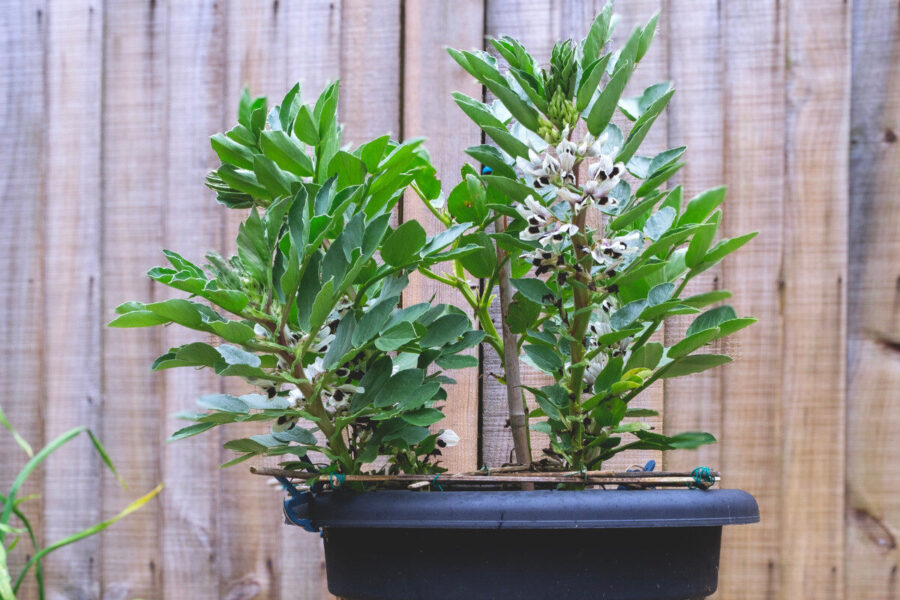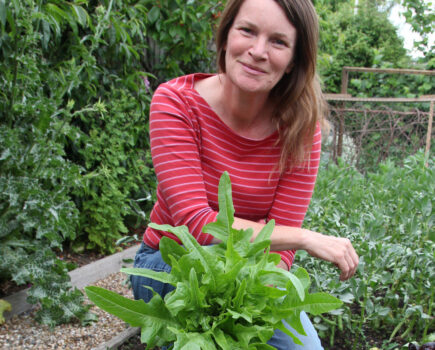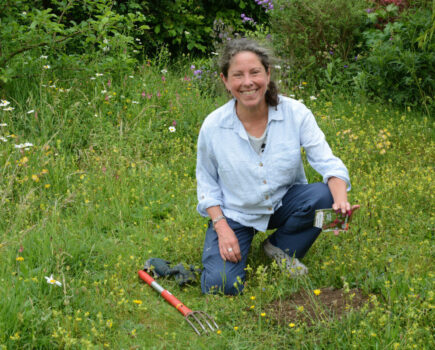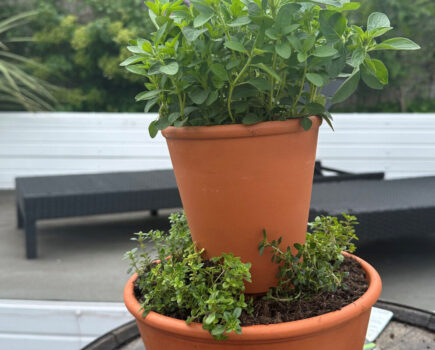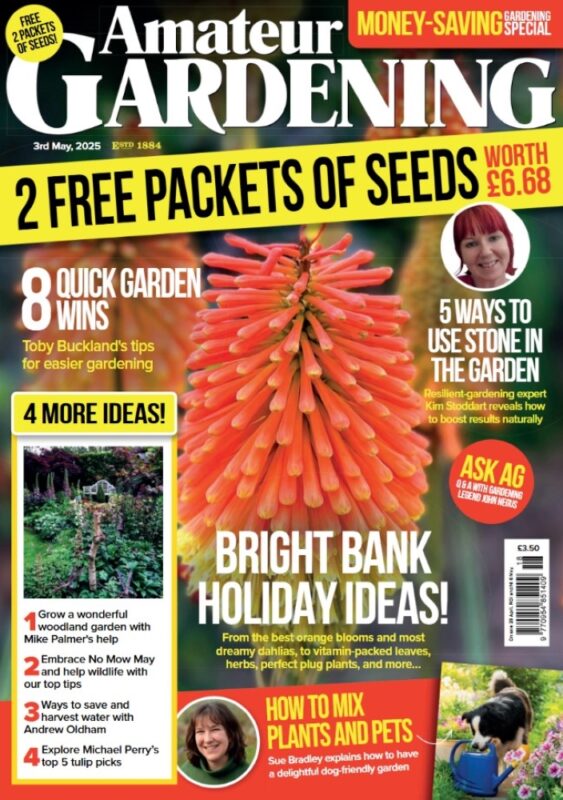Chris Collins Garden Organic’s Head of Horticulture explains how to enjoy lovely home-grown legume harvests from containers or small beds
May is a beautiful bean month for me. Whether it’s broads (sown in early spring), runners or climbing French – these crops are a must-have at my allotment, providing a regular dose of tasty, nutrient-rich harvests. What’s more, the flowers and resulting beans can come in a striking ornamental range of colours and patterns.
Beans are also perfect for pots
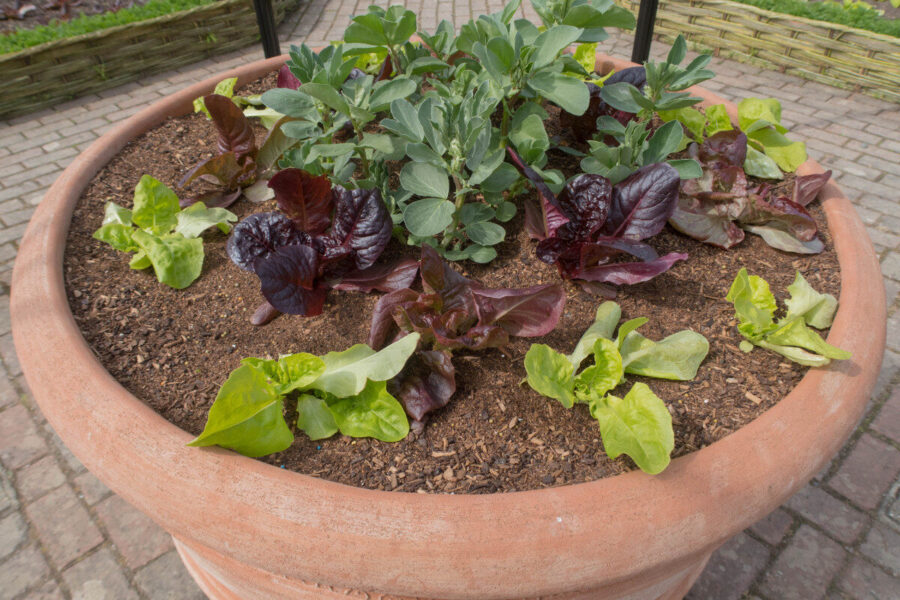
Dwarf varieties of French bean (Phaseolus vulgaris) only grow to 30cm (12in) tall. They can be interplanted and supported with twigs and flowers, while taller types can be trained up a wigwam.
And if you go for heritage varieties with colourful blooms that are brilliant for bees, they’re as good as any ornamental – but with fresh food to boot.
I like to sow dwarf and French bean seeds 5cm (2in) deep direct outdoors, when all chances of frost have passed. You’ll get three plants into one large container (at least 30cm (12in) wide and 45cm (15in) deep). Then I’ll sow another batch three weeks later, with my last sowing around mid-June.
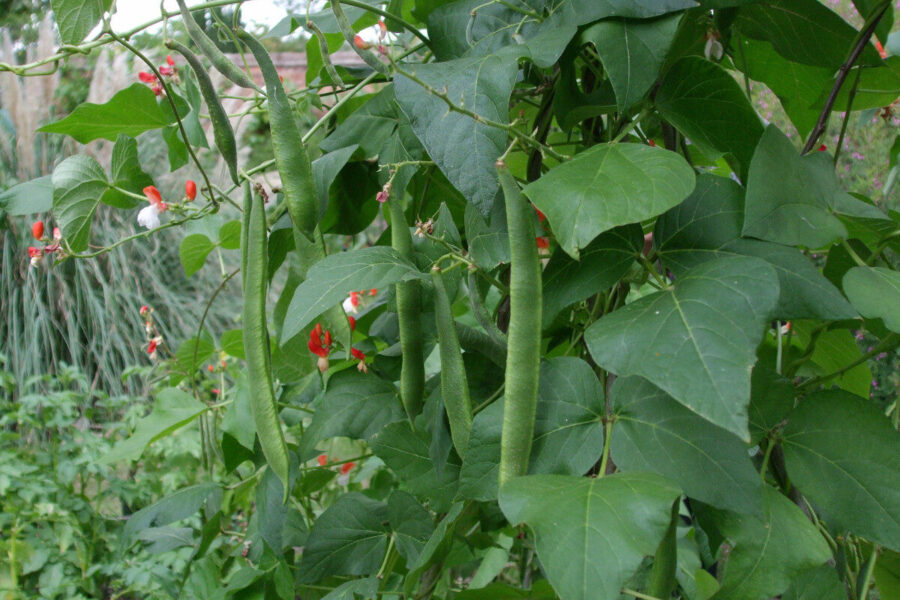
Water and mulch are essential
With climbing types, I insert canes into the ground or pot, tied at the top with string, and insert two or three beans at the bottom of each cane. I’ll always sow more than needed in case I lose any to mice or slugs. These beans like a sheltered spot in full sun.
As they’re a tender crop, be ready with fleece or cloches if a late frost is predicted. And keep well fed and watered as they grow.
Mulching your pots – or the ground – with organic material before planting, and during the summer, can help the plants retain moisture and swell those all-important beans.
…………..
Question & Answer
Q. How do you know when to harvest your beans?
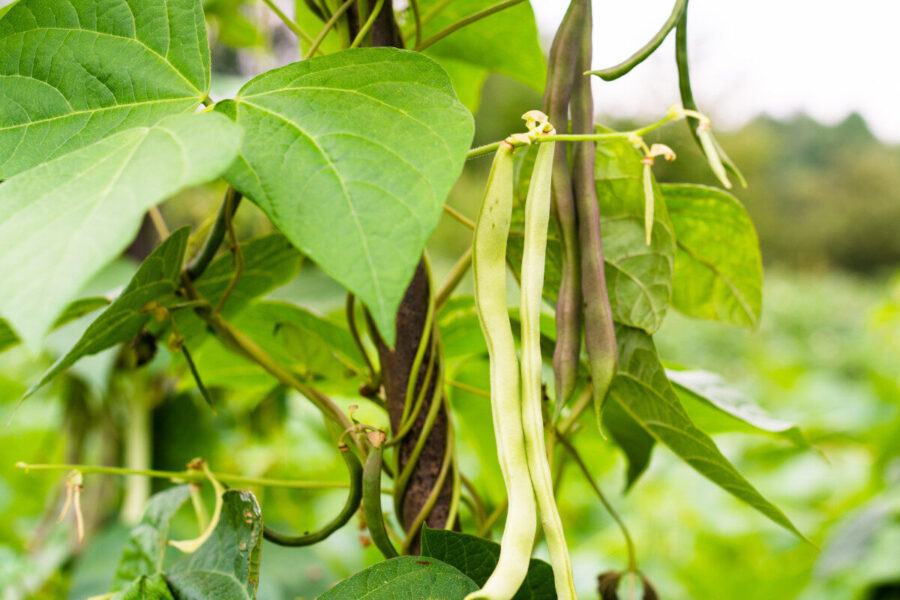
A. I’ll cut the pods when they cleanly snap in half and are small, as this means they’ll be sweet and juicy once cooked. If you let the pods crisp up, you can hang them upside-down to dry. They’ll store for up to three years as ‘haricot beans’ – providing you with seeds to sow or as food for winter after soaking and vigorous boiling.
Q. My beans always get eaten by slugs, what can I do?
A. Slugs really love young bean plants, so wait until they’re more mature, with six to eight leaves, before planting out. It’s at this stage the leaves produce lignin and become a bit too coarse for the slugs’ palates. After this, create barriers with slug collars, grit, wool pellets, and cloches made from plastic bottles.
Q. What are some good varieties to grow?
A. I love the beans from the Heritage Seed Library (HSL) at Garden Organic (of course)– they just seem to taste better! Plus, you know you’re growing something really special with provenance and history. From green pods and coloured pods, to climbers and dwarf, the HSL team pulls together a big list of beans for their annual Seed List, which members can request and grow.
Find more tips, advice and articles like this at the Amateur Gardening website. Subscribe to Amateur Gardening magazine now

